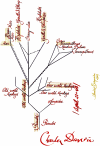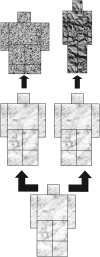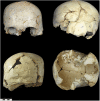Colloquium paper: terrestrial apes and phylogenetic trees
- PMID: 20445090
- PMCID: PMC3024029
- DOI: 10.1073/pnas.0914614107
Colloquium paper: terrestrial apes and phylogenetic trees
Abstract
The image that best expresses Darwin's thinking is the tree of life. However, Darwin's human evolutionary tree lacked almost everything because only the Neanderthals were known at the time and they were considered one extreme expression of our own species. Darwin believed that the root of the human tree was very deep and in Africa. It was not until 1962 that the root was shown to be much more recent in time and definitively in Africa. On the other hand, some neo-Darwinians believed that our family tree was not a tree, because there were no branches, but, rather, a straight stem. The recent years have witnessed spectacular discoveries in Africa that take us close to the origin of the human tree and in Spain at Atapuerca that help us better understand the origin of the Neanderthals as well as our own species. The final form of the tree, and the number of branches, remains an object of passionate debate.
Conflict of interest statement
The author declares no conflict of interest.
Figures






References
-
- Darwin C. The Descent of Man and Selection in Relation to Sex. London: John Murray; 1871.
-
- Menez A, editor. Human Evolution. 150 Years After Darwin. Gibraltar Museum, Gibraltar: Calpe Conference; 2009. pp. 9–16.
-
- Darwin C. On the Origin of Species. London: John Murray; 1859, 1866.
-
- Huxley TH. Man’s Place in Nature. Ann Arbor, MI: Univ of Michigan Press; 1959.
-
- Eldredge N, Cracraft J. Phylogenetic Patterns and the Evolutionary Process. New York: Columbia Univ Press; 1980.
Publication types
MeSH terms
LinkOut - more resources
Full Text Sources

